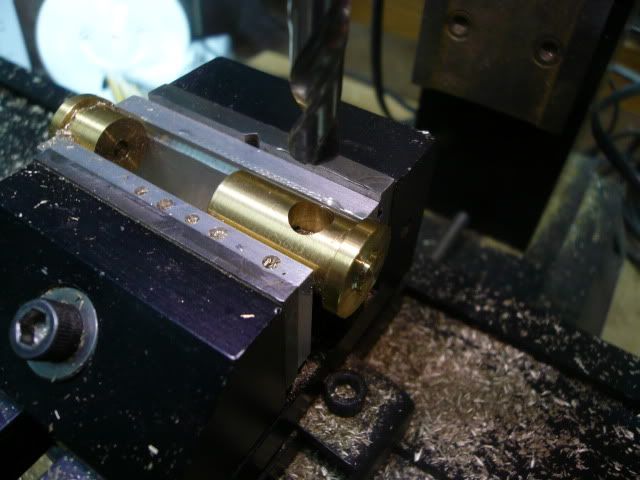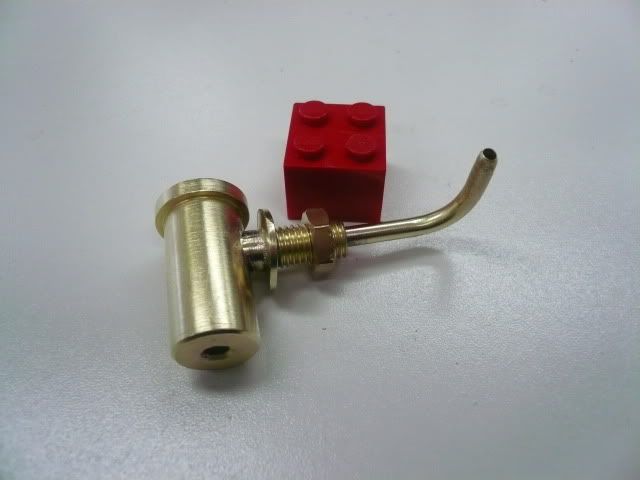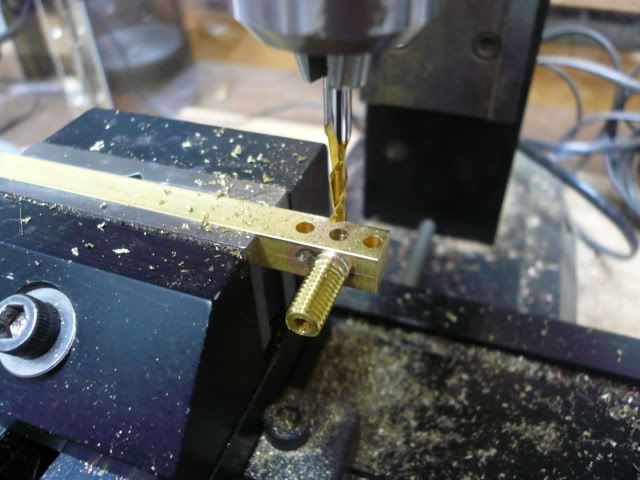Thanks, Arnold.
Faux Case Heater
The original Case tractors ran the exhaust pipe through a heat exchanger that used the exhaust steam to pre-heat water going to the boiler. This heater was built around the exhaust pipe and is visible on the left side of Case tractors as a large diameter pipe parallel to the boiler. From the heater the exhaust steam passed though the smoke box housing and finally exhausted through a blast pipe into the smokestack. The idea was that the blast created draft for the fire.
The exhaust pipe on Rudys Tractor is just an 1/8 brass tube that looks kind of plain. Gary Hart (ghart) came up with a neat way to add some pizzazz to the exhaust on his tractor (see his
post here) and he inspired me to try to do something similar.
(By the way if anyone wants to try adding Garys raised CASE letters, I have his Teflon template and will mail it to the first one to ask. The only provision is that you agree to pass it on to another member when youre done. PM me if you want it.)
I started at the forward end with the blast pipe assembly. The blast pipe assembly begins with a drilled out semi-decorative turning,
that is then cross-drilled
to accept a 1/4 pipe that will pass through the boiler housing.
Here are the fitting pieces less the blast pipe.
The blast pipe is formed from 1/8 brass tubing, necked down to 1/16 ID to form a nozzle. I broke out one of my metal spinning tools and used it to form the nozzle. The steel rod is my reference and is 1/16 Dia.
The brass has to be annealed for this to work. Also, its probably overkill as I think you could get the same blast effect by crimping the tube tightly around the 1/16 rod and then pulling out the rod.
After forming the nozzle, bend the brass tube to form the blast pipe and silver solder the parts together.
After soldering, finish drilling the cross hole to complete the passage from the exhaust pipe to the blast pipe.
Thats the fitting clamped vertically with a loose piece of 1/8 tubing used to center the 3/32 bit. The blue masking tape is my depth gauge.
Heres the completed fitting installed in the boiler housing.
I still need to make some kind of contoured spacer for where the nut meets the side of the housing.
The heater shell is made from a piece of 1/2" brass tubing with a notch cut in one end that straddles the 1/4" blast pipe tube and keeps the shell oriented. The back end is a turned fitting similar to the front end. The exhaust pipe is formed from 1/8 brass tube to complete the faux heater parts.
Here it is installed.
It cries out for rivets doesnt it?! Maybe later. Definitely better than just running the 1/8 pipe.
Thanks again to ghart for a neat idea.
Regards,
Dennis





![DreamPlan Home Design and Landscaping Software Free for Windows [PC Download]](https://m.media-amazon.com/images/I/51kvZH2dVLL._SL500_.jpg)



















